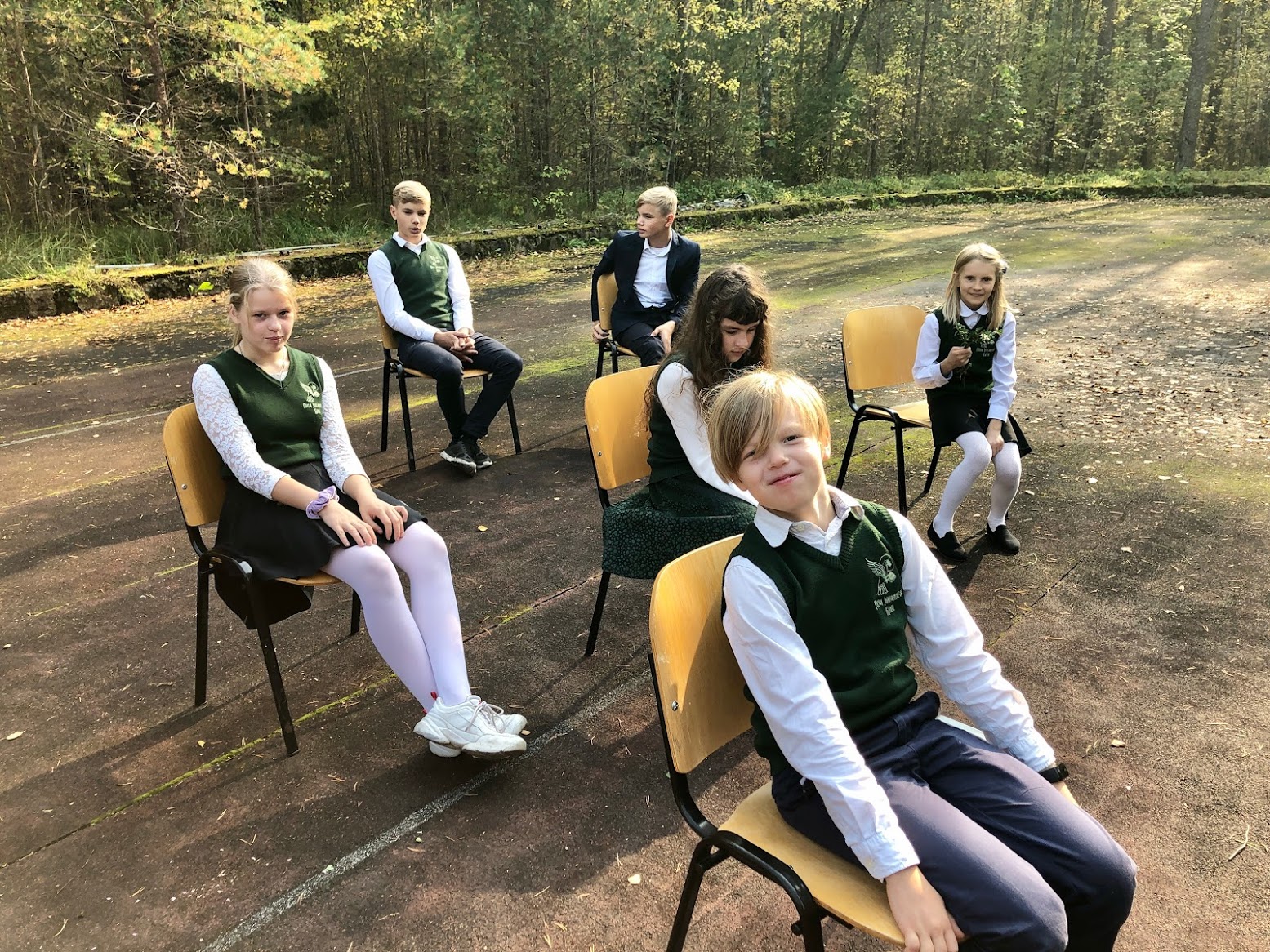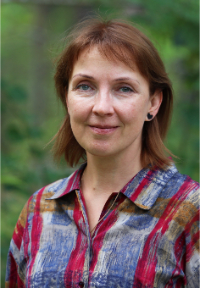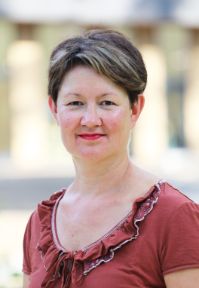St. John the Evangelist School
is a private school based on Christian values drawing on the Orthodox Christian tradition and teaching. The school was created on the initiative of the parishioners of the St John the Baptist Church in Nõmme, Tallinn.
The school opened in September 2013 with 34 first grade students (one class for boys and one for girls). Eventually, with new intake of first-graders, the school will grow into a school of general education covering grades 1-12 (age 7-18).
Currently the school operates in its new building in Kivimäe 25, Tallinn.
Admission takes place on the basis of a registration list and an interview with the students and parents. St John's School welcomes families from a variety of faith traditions as well as those with no denominational affiliation. There is no requirement for the students to be baptised. However the teaching of the school is anchored in the Orthodox Christian Faith.
St. John the Evangelist School provides teaching in Estonian.

Read more about the school in the article/interview by Geraldine Fagan in the East-West Church Report No 1, 2023:
“Now it feels like we can breathe!”:
An Interview with Irina Paert
Enveloped by Scots pines in Nõmme, a suburb of the Estonian capital Tallinn, is the sleek new building of Püha Johannese Kool—St. John’s School—which opened just in time for the start of the 2022-23 school year. The school has an Orthodox ethos—teachers and pupils’ families must share Orthodox Christian values—and its lofty central atrium orients towards an Orthodox chapel where the priest of the nearby St. John the Baptist Orthodox Church holds a weekly prayer service. The chapel’s stark interior walls will be frescoed in due course by the parish’s deacon, Nikita Andrejev, who is also an iconographer.  In early September 2022 studies secretary Pille-Katrin Levin greeted the editor of the East-West Church Report at the new school entrance, where all outdoor shoes must be removed (each pupil has a named shoe compartment.) Levin recalled how the school has increased tenfold since its initial intake in 2012-13, a new first grade being added each successive year. After renting two small rooms in Tallinn’s medieval Old Town “and a tiny corridor beside them where the secretary sat,” St. John’s then moved to a rented former kindergarten in the city’s Mustamäe District. There are now 457 pupils.
In early September 2022 studies secretary Pille-Katrin Levin greeted the editor of the East-West Church Report at the new school entrance, where all outdoor shoes must be removed (each pupil has a named shoe compartment.) Levin recalled how the school has increased tenfold since its initial intake in 2012-13, a new first grade being added each successive year. After renting two small rooms in Tallinn’s medieval Old Town “and a tiny corridor beside them where the secretary sat,” St. John’s then moved to a rented former kindergarten in the city’s Mustamäe District. There are now 457 pupils.
The school’s extensive new facilities include a sports’ hall, library, and cafeteria, which offers pupils three meals a day and also serves as a meeting place for older pupils and parents “to chat, generate new ideas, work on projects,” Levin continued. Fees to attend St. John’s are currently 1,300 Euros [$1,400] per annum.
The school community includes members of both the Estonian Apostolic Orthodox Church—under the jurisdiction of the Ecumenical Patriarch of Constantinople—and the Estonian Orthodox Church (Moscow Patriarchate), even as their hierarchies are formally estranged. While St. John’s’ sponsor parish is under the Moscow Patriarchate, the school has publicly condemned “the distortion of Christ’s teachings for destructive purposes. We cannot agree with Patriarch Kirill’s statements regarding the war in Ukraine, and we consider the bloodshed of the Russian authorities in Ukraine to be a catastrophic mistake. The life-giving message of the Gospel must not be a cover for the work of destruction.” The school has also affirmed that it is not supported financially by “the Moscow Patriarchate, any foreign country, or political group.” [For more on the impact of the war in Ukraine upon Estonian Orthodox under the Moscow Patriarchate, see the East-West Church Report vol. 30, no. 4, 7-10.] St. John’s recently celebrated its tenth anniversary. How did the idea for an Orthodox school in Tallinn develop?
St. John’s recently celebrated its tenth anniversary. How did the idea for an Orthodox school in Tallinn develop?
The idea evolved once we had a quite vibrant community of Estonian converts who had been in the Orthodox Church for a few years. We were engaged in various common projects in the field of education with our friends from the Catholic Church. In Tallinn there is an institution called Old Town Educational College (Collegium Educationis Revaliae) that was established here by the early 1990s, so quite quickly after Estonian independence. It is a municipal rather than a private school, but its most active members have ties to the Catholic Church, and it is quite strong in the area of spirituality. We got to know one another at a conference they organized.
It was also in the nature of our parish and parish priest, Fr. Toomas Hirvoja, to want to extend the spirit of our community into other fields. We have a number of people who work in the spheres of culture and education. Liivika Simmul—our headmistress—had previously founded a private school and so knew how to run one. She believed that we needed to found our own school. In fact, the Catholics also encouraged us—they thought there should be more faith-based schools in Tallinn. It was also a time when a Lutheran school and a second Catholic school were being set up. There was thus momentum among various active Christians to create something within their own confessions, but not strictly for their own people.
Helpfully, the law in Estonia is very favorable towards non-profit schools. They are eligible to receive support per pupil from the Ministry of Education, and in some cases also the municipal authorities. However, this does mean that such schools have to be licensed, and that tuition fees may not be above a certain level.
Why is the school named after St. John the Evangelist?
It was Fr.Toomas’ idea. He suggested that St. John the Evangelist would be a most suitable school patron as—being the beloved disciple of Christ and an apostle of love—he is the epitome of both discipleship and love.
How have you been able to complete this extraordinary new school building despite the recent pandemic?
I think it is really thanks to the grace of God. When we started we had no money, or even any idea of how we were going to do it. Then, in 2019, one of our parents found a plot of land among the pine trees of Kivimäe [part of the Tallinn suburb of Nõmme, approximately two miles from St. John the Baptist Orthodox Church] on a property auction website. With the help of a loan from another parent, the school managed to purchase it. In 2020 we held an architectural competition and managed to secure a bank loan to start building. A really competent team of people was involved—many parents have experience in construction. One school employee, Anti Kodas, turned out to be a genius in this field; he managed the entire project.
How did you manage to raise enough money to build?
Some parents have backgrounds in finance. They demonstrated that the school was sustainable and so helped obtain the bank loan, which needs to be paid back, of course. We also received donations, but not large ones. The important thing is that the parents have standing donations. There are around 200 supporters who give some part of their monthly income to pay off the loan. We are able to pay because we have this extra sum for the building coming in every month. The supporters are primarily parents, but they are not rich—just ordinary people, including many parishioners, who simply love the school and want to support it.
So the burden is spread across many people.
That’s the idea. Even giving five Euros a month still counts; over the years it will make a difference. Our fundraising is not on an American scale—in Estonian culture this kind of philanthropy is not done in the same way; when people give to charity they try to keep it quiet. So far we have managed to fundraise quite delicately, and I hope it will continue in this way.
How long did construction take?
One year—the cornerstone was laid in August 2021. No one can believe it! The builders were working around the clock, especially recently—they were put under a lot of pressure. We were determined to finish because we didn’t have anywhere else to go. We had just given up our old building, which we rented. It had become like a Harry Potter school, where every space was extendable, transformed according to need. Now it feels like we can breathe!
Is theology taught as a separate subject in the traditional manner, or within other subjects and the wider life of the school?
For pupils under 16 it is not a separate subject. We have a class called humanities’ studies, similar to anthropology, with its own program. It includes the Bible, saints’ lives, and other texts. It is the vision of one teacher, Liina Olmaru, who is also a professional actress. She starts with Greek mythology and epics like The Odyssey before moving on to the Old Testament, the Gospels, the saints. She uses narrative-based learning—storytelling, essentially—followed by conversation. This is the favorite subject of many children!
Of course, it is difficult for smaller children to focus, and if they start playing there would be chaos. So they each have an album and they copy artwork, such as icons, into this album. While they follow the lines of the drawing, the teacher tells them stories about what they are drawing, so it is all connected. Their hands are busy drawing, and so they are able to sit and listen.
In the 16-19 age group, pupils have classes in religious education—this is an introduction to religion rather than confessional teaching.
How else do educational approaches here differ from regular state schools in Estonia?
Our art program is particularly rich: It includes printmaking and ceramics. We are lucky to have very inventive and energetic art teachers. We also sometimes integrate subjects in this area. For example, an art teacher and a natural science teacher might take classes into the forest so that the children are able both to learn something scientific and also to draw what they see. In general, teachers like to go outside with the children, and there is time during the school day when being outside is compulsory—not all local schools do this. Even when we were based in the city center and did not have this amazing forest all around us, the teachers would take pupils into Old Town or to nearby parks.
Another feature of our school is that we have adopted a total immersion method of English-language teaching with materials created by Sister Mary Vénard [b. 1923], a Catholic nun from America who spent many years teaching in Estonia. The Catholic school in Old Town shared her materials with us. The children start in first grade, when they can’t really read their own language yet. They receive the same natural environment as native English speakers, where they recite nursery rhymes and other traditional childhood texts. It is intensive in the sense that the children get very involved in the lesson and the material becomes lodged in their heads. By fifth grade, they are fluent. The reading material selected by Sister Mary also embodies the Christian ethos of good neighborliness to others.
This is only for English. We tried to do something similar for Russian—in Estonia the teaching of Russian as a foreign language, despite our Soviet background, is a real challenge. This doesn’t mean that children don’t want to learn it—parents especially, at least before the war, wanted their children to learn Russian because there are many Russian speakers in Estonia, and Russia remains a neighbor. But Sister Mary’s method did not adapt well to Russian, so we use different materials. We offer Russian as either a foreign language or a “second home language,” which is for those children who have Russian-speaking or bilingual parents and whose proficiency level is above beginner’s, but below pupils at Russian-language schools in Estonia. This is also something other schools do not have.
Is the school’s Orthodox ethos also present in the study of music?
The children learn Orthodox hymnody and also some beautiful traditional Estonian Christian hymns. At the end of classes every day they sing a hymn composed for the school by [internationally renowned Estonian composer] Arvo Pärt, “Memme Musi” [Estonian: “Mama’s Kiss”]. Our headmistress wrote the lyrics:
My mother saw me off this morning/She kissed my forehead tenderly/To protect me/And keep me safe from harm.
The school day is almost over now/ Was I good today?/School’s wisdom, like a mother/Feeds and clothes me.
Help me, O Mother of Peace/Carry my prayer to your Son/That I might also greet tomorrow/Filled with love and light.
In general, our school’s musical program is very rich, with elements of music theory and history, as well as instrument learning outside the curriculum—children can learn violin, guitar, and piano here. Thanks to our music teacher, we have five grand pianos! [Laughs.] Singing is also very popular in Estonia: adult and youth singing festivals are held alternately every two years, and every school has several choirs. Ours has five, spanning the various pupil age groups, as well as teachers and parents.
Is Arvo Pärt connected to the school in any other way?
One could say the connection is through the Church. For many people in Estonia—not just our school—Arvo is a spiritual authority, someone above the various
political and ideological struggles that divide society. He may also be the reason for our love for St. Silouan [the Athonite, 1866-1938] and his disciple St. Sofrony [(Sakharov), 1896-1993], founder of St. John the Baptist Orthodox Monastery in Essex, England. [Our parish priest] Fr. Toomas began visiting this monastery in Essex...
…Was Fr. Toomas raised in the Orthodox Church?
No, he is a convert. We had some very spiritual priests here during Soviet times, and when it became possible, some younger people started coming to the Orthodox Church and became part of their community. They were very much interested in the Orthodox tradition of spiritual guidance contained in the Philokalia, and I think they were already reading the writings of St. Silouan in the Soviet period. So it was natural to feel an ascetic connection with St. Sophrony and the monastery in Essex. Arvo Pärt and his wife Nora visited the Essex monastery regularly from the 1980s, and Fr. Toomas from the early 2000s. Fr. Sophrony was no longer alive by that point, but there were other priests there who had been his disciples.
This connection with the monastery has since grown—it is not easy to explain why, but it seems particularly attractive to Estonian Orthodox. There is a group of people who regularly visit Essex—or did prior to the pandemic, at least. Our school began to organize such trips for teachers twice a year. Even non-Orthodox teachers were able to stay for a week, to attend services, and to consult with Sister Magdalen, a nun at the monastery who has long worked with children and teenagers.
Does the school also engage with the wider public?
We have been organizing international public conferences almost annually since 2013, the last few in collaboration with the Arvo Pärt Center in Laulasmaa [25 miles west of Tallinn]. Conference themes have included pedagogy as love and hope, creativity, and metanoia [repentance]. This year it is “To Be Human”—what it means to be human in a time of crisis, dehumanization, and how current events affect our image of God.
